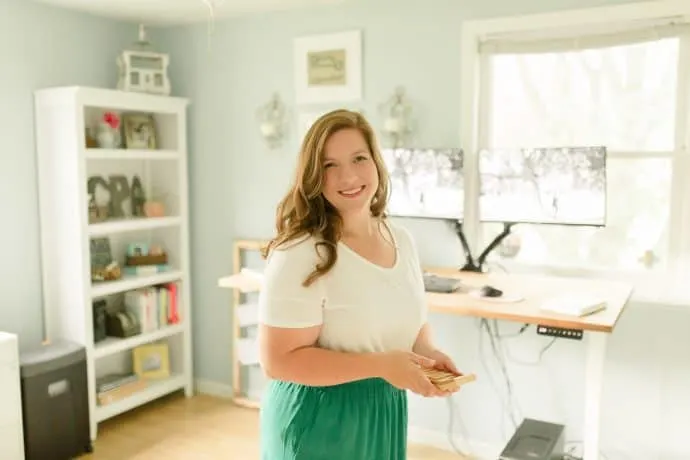5 Common Bookkeeping Mistakes You Might Be Making


At Mediavine, ads are just the beginning. Our mission is building sustainable businesses for content creators, and we’re committed to providing educational resources on all important topics for publishers throughout the industry. Like this post about bloggers seeking legal representation, this one about different planning tools to make your publishing life easier or this one about enhancing your writing skills.
Today we’re happy to welcome guest author Amy Northard to the Mediavine blog. Amy is a CPA and the “Accountant For Creatives”, specializing in her work with creative small business owners. We invited her to share some basic bookkeeping mistakes that she’s frequently observed when working with influencers.

Doing your own bookkeeping can be pretty tricky unless you have an accounting background or know someone who does, but that shouldn’t hold you back. I’m sharing the five most common bookkeeping mistakes I see when reviewing clients’ work, how you can fix them and have peace of mind you’re on the right track.
If you’re a sole proprietor or single-member LLC, make sure you’re not categorizing payments to yourself as an expense. This lowers your overall profit and gives you a false sense of the income you’ll need to pay tax on. Instead, record these payments to an equity account called “Owner’s Draw.” Note: if you’re a S-corporation, you will still report the wages paid to yourself through a salary as an expense.
Think of reconciling like balancing a checkbook. You’re going line-by-line through the transaction detail to make sure what’s in your bookkeeping program matches up exactly with the bank statement. If it doesn’t, now is the time to figure out why. Sometimes transactions just don’t import and sometimes duplicate transactions will import (very common with PayPal).
Most cloud bookkeeping programs (Xero, Quickbooks, Wave) have tools built in to make this a quick and easy process. If you’re using a program that doesn’t have a reconciliation tool, I suggest printing out your monthly bank statements for each account. Then, as you see the transaction or give it a category on the computer, mark it off your bank statement. Anything that appears in the bookkeeping program but not on your bank statement needs to be looked into and same goes for the opposite.
I’ll explain this one with a personal example. I have a PayPal account and a checking account. Every so often, I transfer the balance of what’s in my PayPal account to my checking account. Most cloud accounting programs see that transfer the same as they see income. To their software, it looks like a deposit because the total cash increased. When I categorize these transfers in Quickbooks or Wave, I have to manually tell the program “hey, I took this money out of PayPal (so that balance needs to go down) and put it into my checking account (so that balance needs to go up).”
Whether something cost $1 or $1,000 you’ll need to save that receipt if you want to count it as a business deduction. You can keep digital copies of your receipts or paper copies and some people like to do both. Many bookkeeping programs are incorporating the ability to take a picture of a receipt with your phone and link it to the actual expense in the program. I’ve also heard from clients that love using Evernote to save and organize their receipts. Whatever method you choose for organizing and saving your receipts, just make sure you can easily find what you need in case you’re ever to get audited. Plan to keep these receipts for seven years.
This is super easy to do, especially if your business bank card looks a lot like your personal bank card. I just noticed that I accidentally made this mistake a few weeks ago and used my business card to buy groceries at Trader Joe’s. Luckily, it’s not the end of the world. You can reimburse your business account for the purchase, or you can record the purchase as an “Owner’s Draw.”
The biggest thing here is to not use your business card on a regular basis (or ever if you can help it) to make personal purchases. Some people get in the mindset that it’s like paying themselves and it skips the step of having to make a transfer to their personal account. This is a slippery slope and can lead to messy bookkeeping and blurring the line between your personal assets and business assets.
If you’ve reviewed your bookkeeping and processes and find yourself doing one or more of these common mistakes, don’t stress out. Now is the perfect time to go back and review your bookkeeping and make any corrections before tax time gets here.

Amy Northard is the Accountant for Creatives®. She is a Certified Public Accountant (CPA) who specializes in working with creative small business owners to make taxes and bookkeeping less stressful. She has a passion for helping small business owners wade through all the financial things it takes to start and operate a business so they can focus on their craft. In addition to preparing tax returns and bookkeeping for clients all over the U.S., Amy enjoys teaching small business financial basics through her online course Be Your Own CFO.
Stay up to date with the latest from Mediavine
Publishers spend time creating great content that keeps readers coming back, and we know that safeguarding that content and maintaining control over how it’s used are critical concerns in today’s …
 Eric Hochberger
Eric Hochberger
In a blog post last week, Google announced plans to launch generative AI into Search Labs with a new product called Search Generative Experience (SGE). What exactly is SGE, and …
Since ChatGPT’s release in November 2022, OpenAI’s prototype of generative AI — that is, artificial intelligence that can produce new content on demand — has dominated popular tech media. We’ve …